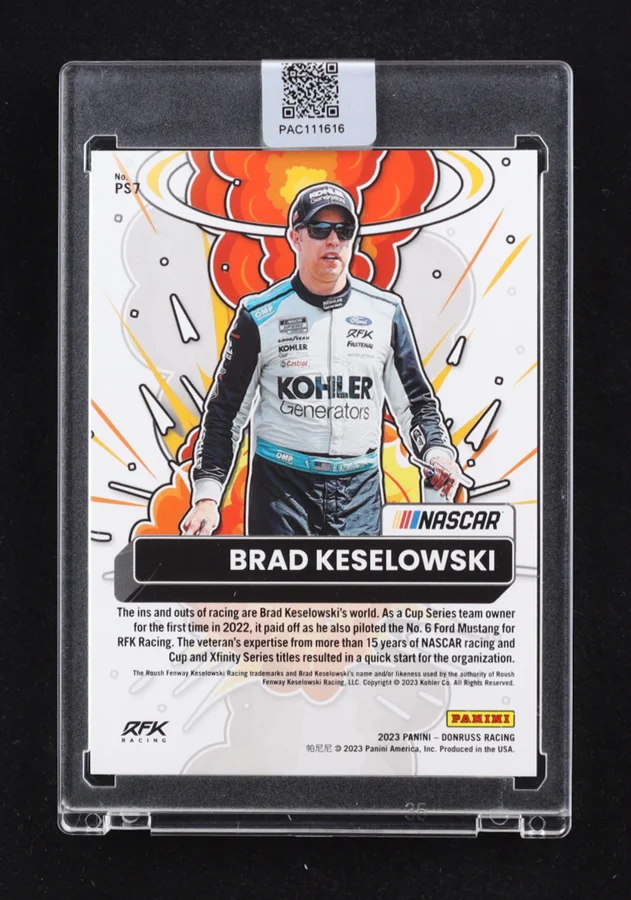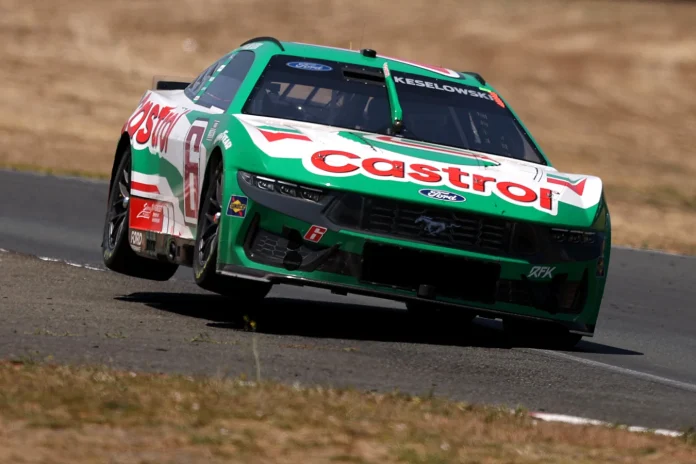NASCAR has unveiled plans for a significant change to its Next-Gen cars in the 2026 season, with Brad Keselowski disclosing a forthcoming boost in engine power, but Dale Earnhardt Jr. expressed doubts about the real-world impact of this Brad Keselowski NASCAR power update. The update, which will reportedly increase horsepower, has ignited debate among industry veterans, drivers, and observers regarding its potential effect on track performance and race outcomes.
Insights on the Planned Horsepower Increase
Brad Keselowski, RFK Racing co-owner and veteran driver, revealed on the Stacking Pennies podcast with Corey LaJoie that NASCAR intends to raise Next-Gen car horsepower to around 740–750 for 2026, up from the reported 670 but closer to 685–690 in actual conditions. He shared,
“To improve is to change; to be perfect is to change often.”
As teams and fans digest this news, many have welcomed the development, expecting it to shake up competition and address persistent complaints about the Next-Gen car’s current performance profile.
The move has already drawn positive remarks from several drivers. Defending Cup Series champion Joey Logano supported the planned boost, emphasizing that enhancing the powertrain—not just the engine—will be vital for achieving a more thrilling and competitive racing product.
Dale Earnhardt Jr.’s Analysis and Caution
Dale Earnhardt Jr., owner of JR Motorsports and two-time Daytona 500 winner, addressed the subject on his Dale Jr. Download show shortly after Keselowski’s announcement, questioning whether the increase would be as influential as some hope. He remarked,

“Does it does it really change what the race looks like? I don’t think it I don’t think you’re going to notice a major difference.”
– Dale Earnhardt Jr., Owner/Driver
Earnhardt grounded his assessment in specific race dynamics, drawing from past experience at short tracks such as Martinsville. He explained the limited effect a horsepower increase would likely have in such settings, stating,
“If you took them to Martinsville, right, and you ran back-to-back races, double header with both packages, maybe you see some subtle differences, maybe not. The drivers, though, are going to get out and say better things, right?”
– Dale Earnhardt Jr., Owner/Driver
While Earnhardt appreciates NASCAR’s attentiveness to competitors’ feedback, he maintains skepticism over the on-track results. He said,
“That’s as important as anything else because the drivers have to support stuff for things to work…. And I think if you’re going to give the horsepower back and hear some favourable comments from drivers, that’s a win.”
– Dale Earnhardt Jr., Owner/Driver
Perspectives from the Racing Community
The proposed power increase has led many pundits to speculate whether this adjustment could alter the dynamics associated with the current Next-Gen car, especially its struggles with dirty air and maintaining momentum. Theories abound about how the boost might positively influence races on various circuits, including historic tracks like Bristol and Martinsville, where passing and lead changes have been concerns since the car’s introduction.
Still, Earnhardt remains cautious. He insists a roughly 70-horsepower bump is unlikely to have transformative effects on shorter and intermediate tracks, despite the optimism expressed by fellow drivers like Logano and Keselowski. These insights reflect the complex and sometimes conflicted opinions within NASCAR’s competitive landscape.
What This Means for NASCAR’s 2026 Season
NASCAR’s decision to consider a horsepower increase for the Next-Gen cars as part of its power update demonstrates the organization’s willingness to respond to driver and team input. The move could improve the driving experience, win favor among those behind the wheel, and potentially draw renewed fan interest or excitement to future events. Yet, no consensus exists among the Cup Series’ most influential names, highlighting ongoing uncertainties about the real impact of technical changes at the highest levels of stock car racing.
With several months to go before the 2026 season, NASCAR teams, including those at JR Motorsports and RFK Racing, will watch closely to see how these regulatory adjustments unfold. The effectiveness of the Brad Keselowski NASCAR power update will only become apparent once officials, drivers, and owners observe the revised cars in competitive action on demanding circuits like Martinsville and beyond.



